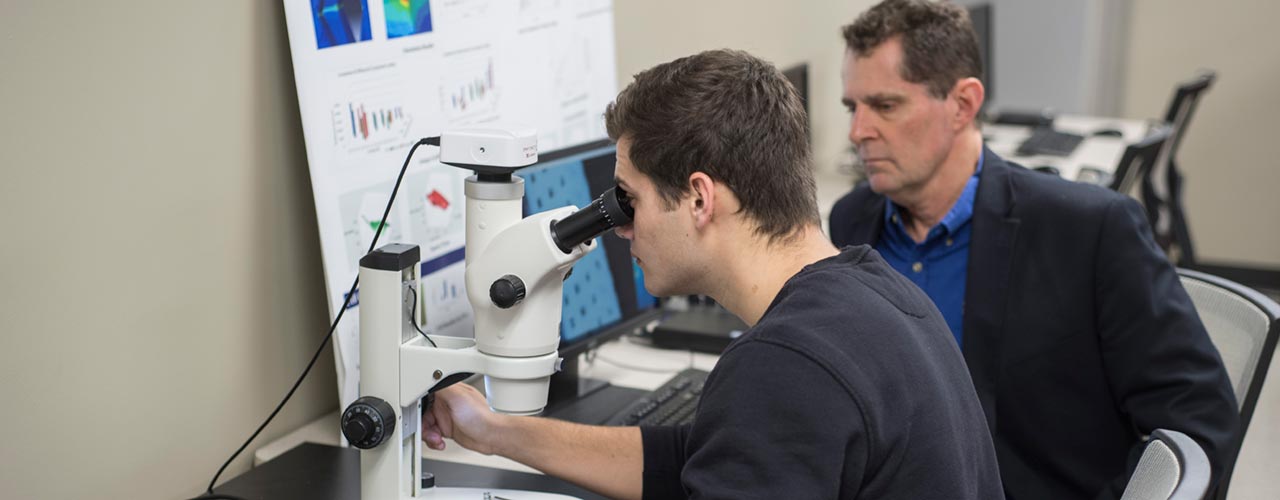by Hannah Fair, Public Relations Writer
Collaborative research by Cedarville senior biomedical engineers and the school of pharmacy shows that 3D printing of human tissue scaffolds has tremendous potential for regrowing bone. The research will be published by the Orthopaedic Research Society (ORS) in March 2018.
3D printing is commonly associated with the industrial design field, where printers are used to create prototypes or actual parts for cars, planes and machinery or scale architectural and other types of models. Now 3D printing is being employed to recreate human organs and bone-building scaffolds.
The biomedical engineering students working on this project are seniors Mitchell Ryan (Hopkins, MI), Daniel Sidle (Macedonia, OH), Stephan Smith (Prompton Plains, NJ), Jacob Cole (Sidney, ME) and freshman Sarah Seman (Delmont, PA).
According to Dr. Tim Norman, distinguished professor of mechanical and biomedical engineering, biomedical engineering and pharmacy students are producing a scaffold, which is like a frame over which bone tissue cells can grow, from a 3D printer. PLA (polylactic acid) is used in the printer; it is a bio-compatible and biodegradable substance. The scaffold is a framework on which the cells will easily inhabit and mimics the body tissue being regrown.
The scaffold is submerged into a growth medium full of cells full of normal endothelial cells that will attach to the scaffold and reproduce. The biomedical engineering design group is partnering with Dr. Rocco Rotello, associate professor of pharmaceutical sciences, to culture human cells in the pharmaceutical science laboratory.
Ideally, the cell-enriched scaffold would be implanted into the body to eventually regrow the missing tissue. The scaffold is resorbed by the patient’s body, while the cells produce the new tissue.
“The biomedical field is growing and moving so quickly, and this project reveals the interdisciplinary nature of this field extremely well,” Norman said. “It shows our students that collaborative work with other disciplines is necessary for successful biomedical engineering projects.”
Cedarville began the research in 2015 and is still in the early stages of the research process. The biomedical engineering research paper on 3D printing human tissue will be published in March 2018 at the ORS annual meeting in New Orleans.
The end goal of the research is to design a scaffold that supports cell life and represents the tissue it is meant to replace.
Located in southwest Ohio, Cedarville University is an accredited, Christ-centered, Baptist institution with an enrollment of 3,963 undergraduate, graduate, and online students in more than 150 areas of study. Founded in 1887, Cedarville is recognized nationally for its authentic Christian community, rigorous academic programs, strong graduation and retention rates, accredited professional and health science offerings, and leading student satisfaction ratings. For more information about the University, visit www.cedarville.edu.


















